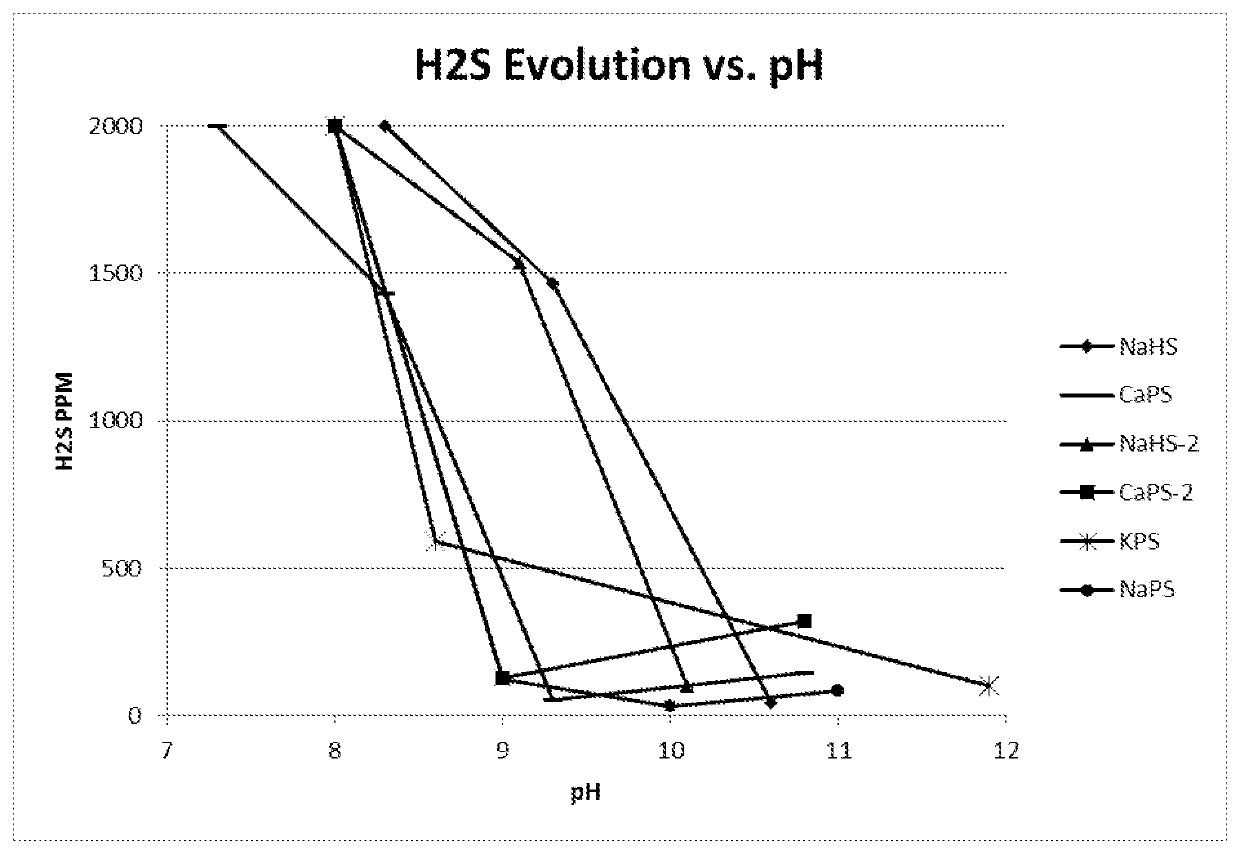Depression of copper and iron sulfides in molybdenite flotation circuits
a flotation circuit and copper sulfide technology, applied in the direction of flotation, process efficiency improvement, solid separation, etc., can solve the problems of low mo recovery, many flotation stages, and significant health and safety issues of the process, so as to reduce the slurry ph, improve the overall hse quality, and increase the effect of effectiveness
- Summary
- Abstract
- Description
- Claims
- Application Information
AI Technical Summary
Benefits of technology
Problems solved by technology
Method used
Image
Examples
Embodiment Construction
[0040]These chemicals have been laboratory tested successfully using concentrates from three different Cu / Mo operations in the Southwest U.S. and Mexico. A list of typical test parameters is shown below;[0041]Conditioning Time: 1 to 30 Minutes as necessary[0042]Float time: 12 to 30 minutes as necessary.[0043]Froth removal rate: Slow to moderate for good selectivity.[0044]ORP value in Conditioning and Flotation[0045]CaPS: −430 to −580 mV; at 3.4 to 8# / T dosage rate[0046]NaPS: −450 to −560 mV; at 9 to 15# / T dosage rate[0047]KPS: −450 to −560 mV; at 6 to 11# / T dosage rate
NOTE: # / T=pounds reagent per ton of Cu / Mo concentrate feed, dry basis.
[0048]A typical testing protocol that simulates plant operations was used for the testing with some variations depending on the specific plant location and desired parameter optimization. A typical Mo flotation process which is the basis of the simulated testing has Cu / Mo Concentrate flow passing sequentially through a Thickener (˜60% Solids) to a st...
PUM
| Property | Measurement | Unit |
|---|---|---|
| Oxidation-Reduction Potential | aaaaa | aaaaa |
| Oxidation-Reduction Potential | aaaaa | aaaaa |
| oxidation reduction potential | aaaaa | aaaaa |
Abstract
Description
Claims
Application Information
 Login to View More
Login to View More - R&D
- Intellectual Property
- Life Sciences
- Materials
- Tech Scout
- Unparalleled Data Quality
- Higher Quality Content
- 60% Fewer Hallucinations
Browse by: Latest US Patents, China's latest patents, Technical Efficacy Thesaurus, Application Domain, Technology Topic, Popular Technical Reports.
© 2025 PatSnap. All rights reserved.Legal|Privacy policy|Modern Slavery Act Transparency Statement|Sitemap|About US| Contact US: help@patsnap.com

